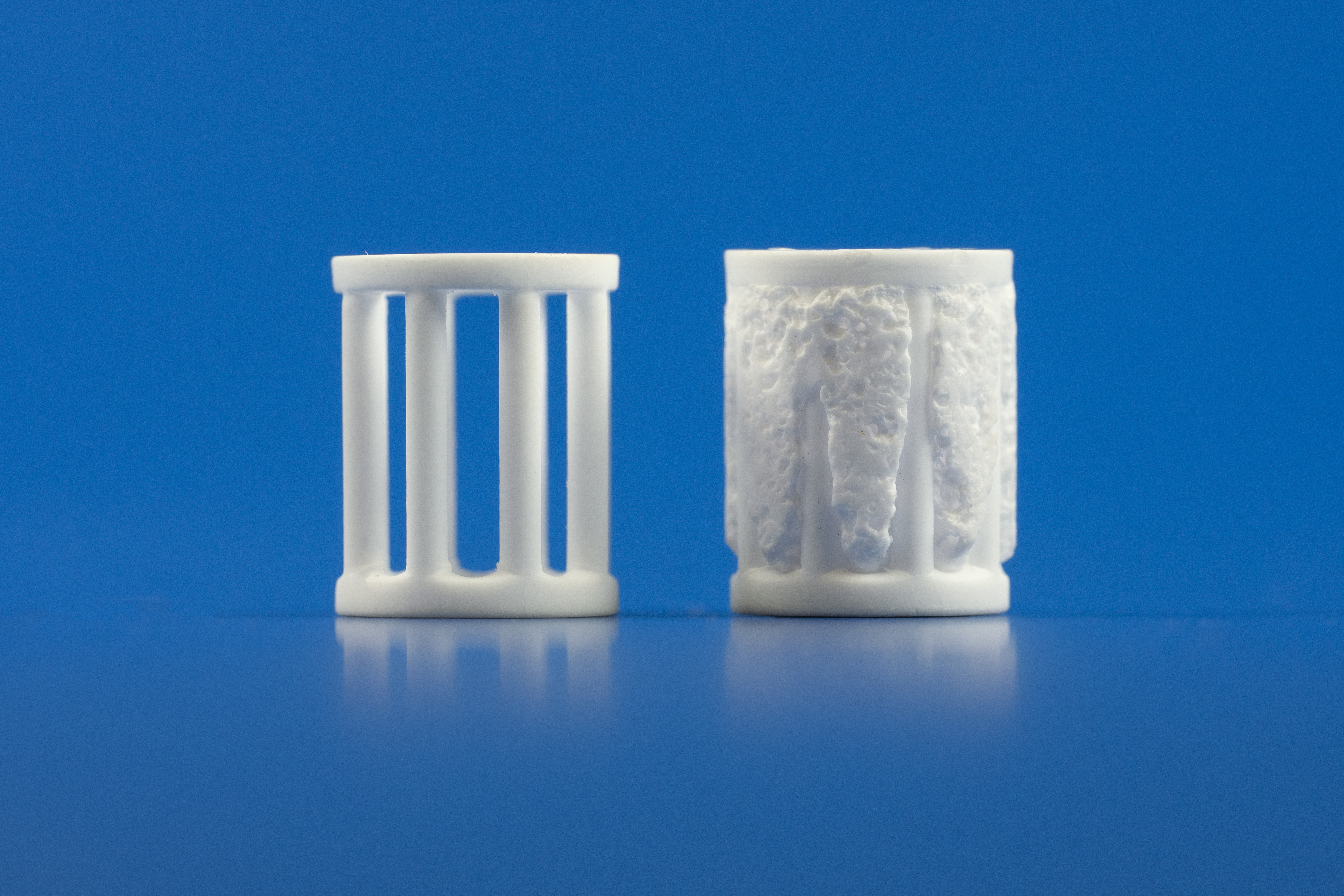BMBF project “Hybrid-Bone“ starts
To give hope to those affected by bone defects: This is what researchers from the Department of Oral and Maxillofacial Surgery in Kiel, the University of Leipzig, University Medicine Rostock and Fraunhofer IKTS aim to do. As part of the “Hybrid-Bone“ project, they are developing personalizable ceramic bone replacement materials and structures for improved regeneration in the craniofacial region. Administratively supported by Starter GmbH, “Hybrid-Bone“ is funded by the Federal Ministry of Education and Research with 1.5 million euros over a period of three years.

Bone defects in the area of the facial skull are often accompanied by aesthetic and functional impairments. Up to now, the reconstruction has been carried out using the body's own bone transplants, for example from the fibula or from the pelvic bone. However, these offer only an inadequate reproduction of the complex anatomy of the facial skull.
Novel approach for bone regeneration
In the “Hybrid-Bone“ project, personalizable and thus precisely fitting, mechanically stable bone replacement materials are combined with growth factors in the degradable part of the hybrid scaffold, thus enabling a programmed stimulation of bone regeneration. In addition, the artificial bone replacement materials are to be further developed technically in such a way that the natural force distribution in the respective bone is considered and more account is taken of biomechanics. Masticatory and muscular forces play a major role in the perpetual build-up and breakdown processes of bone tissue, so that the planned imitation of the natural bone architecture also offers a prerequisite for long-term stability.
For the procedure, the bone defect is first recorded and analyzed by means of three-dimensional imaging. With the help of virtual surgery simulation, a scaffold that fits the defect precisely can be developed. This is then manufactured from various materials and structural components using a combination of additive manufacturing and foaming (simplified in Fig.1).
Additive manufacturing and freeze foaming of ceramic bone replacement
At the Fraunhofer Institute for Ceramic Technologies and Systems IKTS, the powder bed-based binder Jetting CerAM BJ and the bath-based photopolymerization CerAM VPP are used to produce load-bearing, denser support structures. “Within the framework of the project, the aim is to work out which is the most suitable 3D printing process in terms of mechanical strength and biocompatibility for the application aimed at here,“ explains Dr. Matthias Ahlhelm, project manager at IKTS. The finished support structure is then foamed with a porous and degradable calcium phosphate ceramic that mimics the shape of the jaw. Fraunhofer IKTS uses freeze foaming for this purpose, which allows any powdered material to be foamed near-net-shaped. “The bone ceramic manufactured in this way serves as a lead structure in which the body's own cells are to grow,“ says Dr. Ahlhelm. In a joint heat treatment process, both structural components finally fuse together to form a hybrid bone construct.
The porous ceramic foam is then biologized with growth factors, so-called bone morphogenetic proteins, to stimulate or accelerate the regeneration process. Implemented in the body, this porous bone ceramic is to be gradually degraded and replaced by the body's own bone tissue. This bone tissue will grow together with the remaining components of the scaffold, the internal load-bearing struts.
Besides the hybrid bone structure, biocompatible material hybrids of titanium alloy calcium phosphate and zirconium dioxide calcium phosphate will be used. In the future, the procedure should also be transferable to other bone structures, such as the spinal column or limbs.
Grant no.: 03VP07633